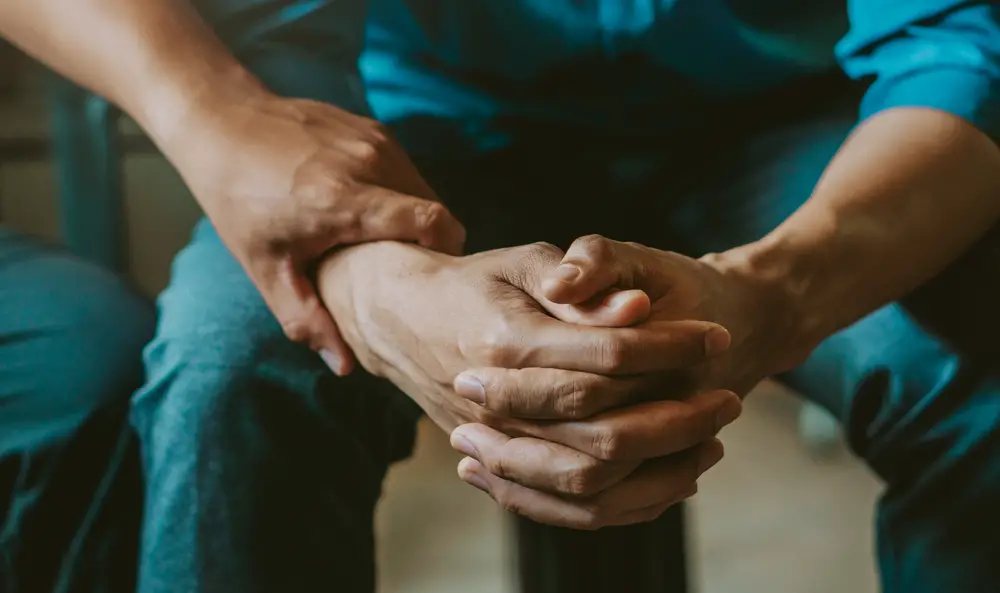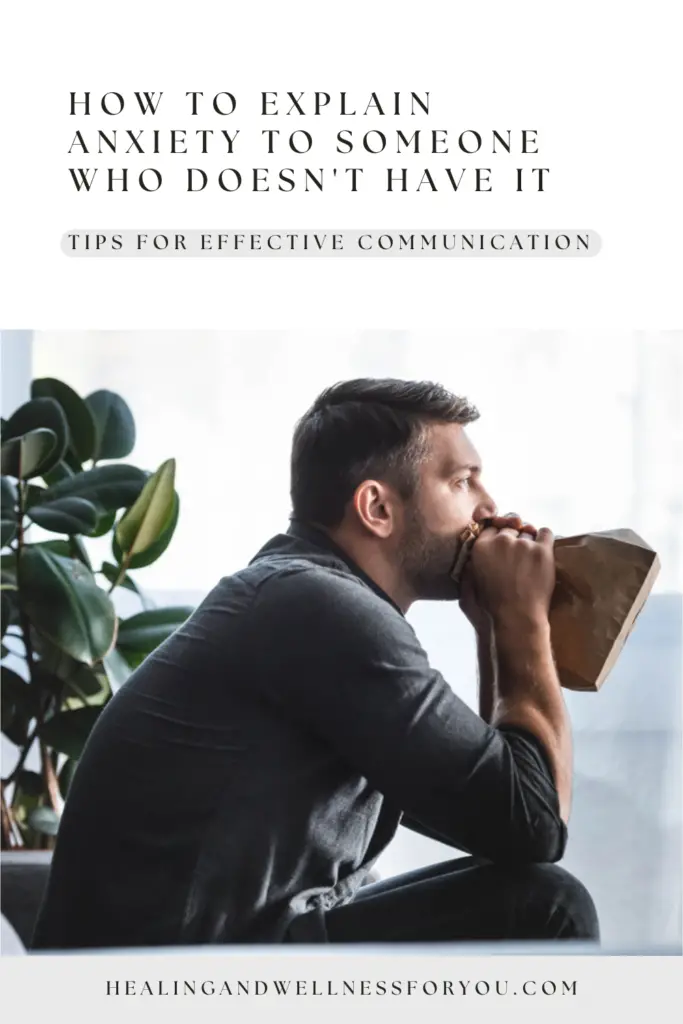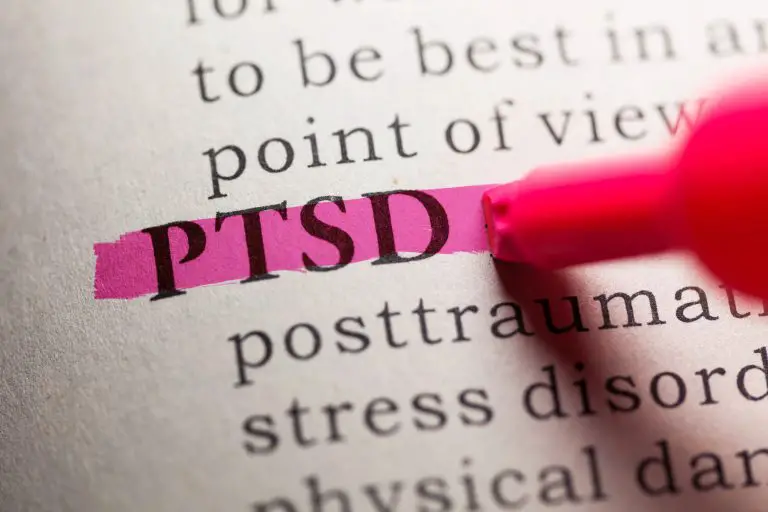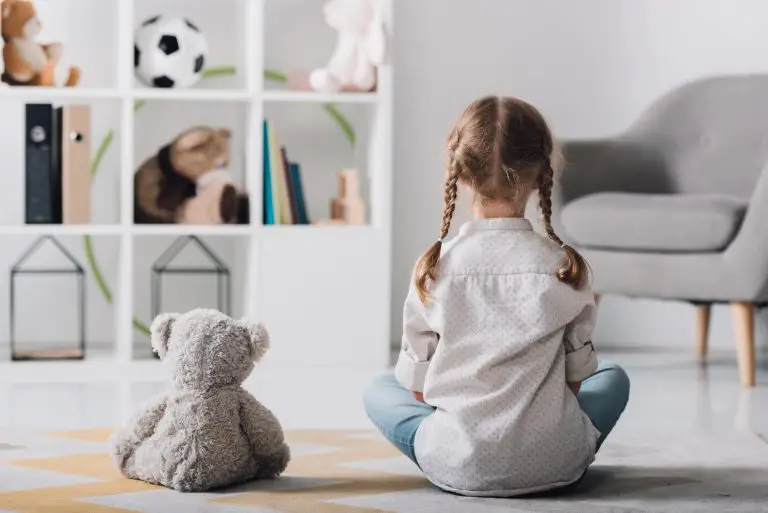How to Explain Anxiety to Someone Who Doesn’t Have It: Tips for Effective Communication
How to Explain Anxiety to Someone Who Doesn’t Have It: Tips for Effective Communication

Consider how anxious and under pressure you could feel before an extensive exam or interview. Now imagine what it could be like to go through that without knowing why or how it happened. Regretfully, anxiety can seem like this for a lot of individuals, and explaining anxiety to someone who doesn’t have it can be challenging. It’s difficult to share our experiences, mainly when doing so calls for self-awareness. Many people find comprehending the emotions, ideas, and bodily sensations associated with worry is challenging. One can successfully close the comprehension gap between one’s own experiences and those of others by employing meaningful analogies and examples.
There are many ways that anxiety can show up for people, and when it does, it can affect how people live their daily lives. It’s critical to understand that anxiety is more than just tension or uneasiness; there are a lot of myths about anxiety, which can make communication even more difficult. One can promote empathy and support among friends and family by sharing personal experiences and dispelling these falsehoods.
What is Anxiety?
Due to its complex nature, anxiety can interfere with daily functioning in many ways. It can appear differently to different people, which makes understanding it difficult. To understand it better, let’s examine its definition, prevalence, types, and manifestations.
Definition of Anxiety
Anxiety is an emotion that manifests as tension, concern, fear, and unease. This is a typical adaptive and evolutionary stress reaction to protect us from harm. But when it goes too far, it may become a condition that always leaves one feeling uneasy.
The amygdala is a tiny, almond-shaped structure found deep within the temporal lobes of our brains. It plays a critical role in the limbic system’s processing of memories, emotions, and survival instincts. It constantly gathers information by perusing its surroundings and using its senses. The amygdala triggers the “alarm” and tells the sympathetic nervous system to activate in response to anything it believes to be threatening. The amygdala is involved in the formation and storage of emotional memory. Therefore, stressful prior experiences have the potential to trigger an alarm when there isn’t a real threat.
Consider anxiety as a malfunctioning smoke detector or car alarm system. The alert could sound with the slightest touch or for no apparent reason. Like the “wiring” in our brains, even when an alarm does not pose a threat, it may be too sensitive to outside stimuli.
Clinically speaking, anxiety is frequently defined as a state that impairs both mental and physical health and is typified by an elevated level of arousal. This could result in symptoms that affect a person’s capacity to carry out daily tasks in social or professional settings.
Prevalence of Anxiety
Anxiety is one of the most prevalent mental health conditions in the world and is thought to affect 20% of adult Americans at some point in their lives. An estimated 4% of people worldwide are thought to suffer from anxiety. Anxiety can affect people of all ages and backgrounds. This percentage can vary due to underreporting, cultural perceptions of mental health, and other factors. Many individuals might not seek help, so awareness of its prevalence highlights the need for understanding and support from friends and family.
Types of Anxiety Disorders
There are different types of anxiety disorders, each with unique characteristics. Among the principal varieties are:
• GAD or Generalized Anxiety Disorder: A disorder characterized by excessive and ongoing concern over different facets of life.
• Social Anxiety Disorder: Characterized by an intense dread of being assessed by others in social circumstances.
• Panic disorder: Consists of unexpected bursts of extreme terror, frequently accompanied by bodily manifestations such as breathlessness and a racing heart that might resemble heart attack symptoms.
• Specific Phobias: Irrational fears related to certain things or circumstances, like spiders or heights.
Every type has distinct symptoms and causes that might differ significantly from person to person.
Manifestations of Anxiety
Anxiety can manifest in both psychological and physical ways. Common psychological symptoms include:
- Persistent worry
- Irritability/restlessness
- Trouble focusing or controlling worry
- Urge to avoid triggers
- Trouble making decisions
On the physical side, anxiety may lead to symptoms such as:
- Rapid heartbeat
- Shortness of breath
- Sweating
- Nausea or other digestive issues
- Shaking/trembling
- Muscle tension
- “Pins and needles” prickly sensations
- Headaches
- Trouble falling or staying asleep
These symptoms can have a significant impact on day-to-day living. Those without anxiety may find it easier to relate to those who suffer from it if they are aware of these differences.
Challenges in Explaining Anxiety

It can be challenging to describe anxiety to someone who has never experienced it. There might be obstacles, such as the stigma attached to the condition in society, the intangible character of symptoms, and the difficulty in expressing oneself. Any one of these elements has the potential to undermine communication.
Difficulty in Explanation
A lot of people find it challenging to describe their feelings of anxiety. Individual differences can be observed in the mental and physical symptoms associated with this illness. Describing such sentiments can seem abstract for someone who has never felt fear, dread, or uneasiness.
Metaphors can help close this gap. Anxiety can be compared to the feeling of breathing through a straw to illustrate the sense of limitation that one may encounter. Nevertheless, it could be hard to establish a clear understanding because not everyone can relate to these experiences.
Stigma and Misconceptions
Misconceptions regarding anxiety and mental health are common in society. Some think it’s just a pretext or a show of weakness. People may feel invalidated by these opinions and find it more difficult to talk honestly about their experiences.
People could worry about being rejected or judged. This dread may keep people from having fruitful discussions about anxiety. The stigma associated with mental health problems can erect obstacles that prevent empathy and understanding.
Invisible Nature of Symptoms
Explanations of anxiety symptoms might be challenging because they are not always evident. In contrast to many physical illnesses, anxiety symptoms are frequently experienced internally. These symptoms could be ignored simply because they are unseen. For instance, a person may appear calm on the outside while struggling internally. This lack of clarity may cause people to underestimate just how crippling anxiety may be.
Tips on How to Explain Anxiety to Someone Who Doesn’t Have It

Providing specific instances and comparable emotions is helpful when describing anxiety to someone who has never experienced it themselves. These pointers can help bridge the knowledge gap.
Make Easy Comparisons: It helps to compare anxiety to other common emotions. One may say, “It’s like walking down a dark and scary alley at night,” or “Having an important test that you can’t stop thinking about.” Anxiety can be effectively illustrated by using metaphors such as “running from a lion” to convey the fight-or-flight response of the nervous system. Consider anxiety as “a shadow” constantly there but controllable as another analogy. It can be easier to explain the unexpected burst of panic and help others understand how physically powerful anxiety can feel by drawing comparisons to riding a roller coaster. These kinds of parallels help to humanize and simplify the idea.
Describe Physical Symptoms: Describe the physiological effects of anxiousness. They may feel dizzy or trembling, perspiration, headaches, nausea, diarrhea, constipation, or “butterflies” or churning feelings in their stomach.
Share Personal Experiences: Talk about times when anxiety took over. For instance, someone might talk about how it can be unsafe to meet new people. People can communicate difficulties by sharing their coping strategies and day-to-day experiences. Talking about anxiety’s unpredictable nature helps draw attention to how intrusive it is. This method assists people in realizing that anxiety impacts life and is not just a source of worry.
Describe the Triggers: Describe the situations or ideas that can set off anxiety. This could include social pressures, work-related stress, or even stress from routine duties. Little things frequently add up to generate cumulative pressures that worsen over time. Anxiety can be made more relatable by giving instances from actual situations. The difficulty might be illustrated by mentioning how social circumstances frequently feel overpowering and may cause avoidance.
Discuss Coping Strategies: Discuss techniques for dealing with anxiety, such as deep breathing or speaking with a friend. Bringing attention to these techniques can offer understanding and hope.
Using fictional characters to aid in explanation: When someone doesn’t experience anxiety, fictional characters can be a relatable way of comprehending how it feels. The movie Inside Out 2 introduces the character of anxiety and illustrates what it’s like to have a panic/anxiety attack. Anxiety creates a tornado as she works into a frenzy protecting the main character, Riley. Her fears of not fitting in and navigating new social situations after finding out her friends will attend a different school take over. During this attack, the focus becomes narrow, mirroring disconnection. The negative thought, “I’m not good enough,” repeats in her mind. Riley clutches her chest; her heart beats faster, and she struggles for breath. The light changes, clueing the viewer into the sensory overload that can accompany an attack.
Other characters who exhibit anxiety include Hermione Granger from Harry Potter, who feels the need to prove herself and overachieve; Will Byers from Stranger Things, who experiences intense anxiety and hypervigilance following his traumatic experience; Chidi Anagonye from The Good Place; and Piglet from Winnie the Pooh, who worries about everything in his life.
Using these suggestions, someone without anxiety may find it easier to relate to and comprehend the difficulties. People are more inclined to be empathic when they have a better understanding of what anxiety feels like. For the anxious person, this can lessen feelings of loneliness.
Common Misconceptions About Anxiety
Many misconceptions about anxiety exist, and this can make it challenging to grasp. It can impact both those who experience anxiety and those who wish to support them. Dispelling these false assumptions is essential to understanding anxiety.
One widespread misconception is that anxiety is just a heightened stress response. Severe problems like anxiety disorders might interfere with day-to-day functioning. These are more than just transient anxiety attacks, and they frequently call for professional attention. Another fallacy is that people can “snap out of it.” Anxiety is more than a matter of willpower and can feel overwhelming at times.
It’s also possible for people to perceive anxious people as weak. This is not accurate. Mental health issues can impact individuals of any strength or disposition. Such stereotypes can further alienate those who need support.
There’s also the misconception that you can detect anxiety in others. Even when they are suffering, people can seem composed on the outside. A duck gliding over water would make an excellent analogy. Above the surface, it looks smooth, yet underneath, its legs are paddling to maintain motion and equilibrium. Anxiety can appear cool under pressure, but it can also cause physical symptoms and racing thoughts.
It is a common misconception that someone who feels nervous in one circumstance must be anxious in others. Anxiety can be situational and may not manifest in the same way. For example, someone could experience more pressure in anticipation of a particular event.
Trying to calm someone down when they’re feeling anxious is a widespread belief that, while well-intentioned, can be counterproductive. It can create unnecessary pressure for the person to try to control emotions, which is often impossible. It is far more helpful to validate and acknowledge the person’s feelings.
How to Support Loved Ones with Anxiety?

Supporting someone with anxiety requires understanding, patience, and practical actions. An individual can benefit greatly from the assistance of loved ones in managing their emotions and surroundings.
Supporting Friends or Family
Offering support to someone who is feeling anxious can have a significant impact. Begin by paying attention. Then, allow them to freely communicate their emotions, demonstrating the importance and validity of their feelings.
Encourage children to share by posing open-ended inquiries. “How are you feeling today?” is one example. This demonstrates interest and opens a conversation. Wait until they ask for help before offering it.
Offer to assist with particular tasks instead. This can be going on errands with them or going on a walk with them. Taking part in activities together can help reduce feelings of loneliness.
Reassuring phrases can provide comfort and validation of emotions:
- I’m here for you.
- Take your time.
- Your feelings are valid.
- I can see you’re worried.
- Take a big breath with me.
- Let’s look for a quiet place to sit for a moment.
- It’s okay to take a break if you need it.
- What’s one small step we could do?
- What can I do to support you right now?
- It’s okay to feel like this.
It’s also important to remember that people will react differently to these recommendations. Something that one person finds useful may feel uncomfortable to others. Please ask and be respectful of others’ boundaries!
Creating a Supportive Environment
Establishing a calm environment can significantly help with anxiety management. Assist in creating a routine that encourages stability. Consistent schedules give one a feeling of control. Reduce as many distractions as possible from your surroundings. This could be clearing out clutter or limiting noise volume. Promoting outdoor activities can also be beneficial. Nature has a calming effect. Together, they encourage wholesome behaviors. Eat well-balanced meals, get enough sleep, and exercise regularly. These activities can strengthen resilience against anxiety and improve overall mental health.
Finally, use patience. By demonstrating continuous support, one can grow trust and encourage healing, but this can take time. Be mindful that everyone has both good and bad days.
Key Points
Comprehending anxiety is essential to cultivating empathy and support in interpersonal relationships. Explaining anxiety about particular events, describing bodily sensations, and giving relatable analogies can be helpful. These examples can help people who are unfamiliar with anxiety understand how it affects day-to-day living.
Wrap-Up
When talking about anxiety or any other mental health issue, open communication is essential. It makes it possible to understand what someone else might be going through with more clarity. One way to lessen misconceptions is to promote curiosity and ask plenty of questions.
It’s also important to practice active listening. This means listening to what someone is saying without assuming anything or drawing quick conclusions. Try to extend grace and give the other person the benefit of the doubt. Active listening assists in establishing a secure environment for discussing emotions.
It’s essential to exercise patience during these discussions. People frequently need some time to understand anxiety. In doing this, relationships can be strengthened by offering assurance and support.

About the Author:

Carlyn is an LPC at Infinite Healing & Wellness, pursuing certification in EMDR. Her experience as a mother of three helps her create an accepting, nonjudgmental, and safe space for clients across the lifespan to heal and grow.
Frequently asked Questions
Anxiety can be challenging to understand, especially if you’ve never experienced it yourself. When talking to someone who doesn’t have anxiety, finding the right words to explain how it feels can be tough. This FAQ offers insights and practical tips on how to explain anxiety to someone who doesn’t have it so they can better understand the experience and offer meaningful support.
How can I help someone understand what it feels like to live with anxiety?
When learning how to explain anxiety to someone who doesn’t have it, it can help to use metaphors or real-life examples that resonate. For instance, you might compare anxiety to a persistent feeling of worry or a sense of danger that won’t go away, even in safe situations. This can help people grasp the constant and often irrational nature of anxiety.
What’s a good approach to take when trying to describe anxiety?
If you’re trying to explain anxiety to someone who doesn’t have it, start by breaking down the experience into physical, emotional, and mental components. You could describe the racing heart, tense muscles, or overwhelming thoughts as things that happen without an actual trigger, helping them understand that it’s not simply “worrying.”
Why is it so hard for people without anxiety to understand it?
People who haven’t experienced anxiety may struggle to relate because anxiety often defies logical thinking and rational solutions. Learning how to explain anxiety to someone who doesn’t have it involves communicating that it’s a medical condition and not something you can “just get over.” Emphasizing the difference between everyday stress and chronic anxiety can clarify why managing it is more complex.
What should I avoid saying when explaining my anxiety to others?
When you’re considering how to explain anxiety to someone who doesn’t have it, it’s helpful to avoid statements that minimize the experience, like “I just get a bit nervous.” Instead, focus on conveying that anxiety is often irrational but powerful. Avoid downplaying it, as this can lead to misunderstandings or unhelpful advice like “just calm down.”
Are there any helpful analogies to use for explaining anxiety?
Yes! How to explain anxiety to someone who doesn’t have it can sometimes involve comparing anxiety to things like feeling trapped in an unpredictable storm, where you’re always on edge and anticipating something bad. Using analogies can make it easier for them to visualize the constant unease that comes with anxiety.
What if they still don’t get it?
Unfortunately, not everyone will fully understand, and that’s okay. Part of how to explain anxiety to someone who doesn’t have it is knowing that even if they don’t completely grasp it, they can still offer support by listening and validating your feelings. Encourage them to ask questions and remind them that you don’t expect them to “fix” it—just to be there.








